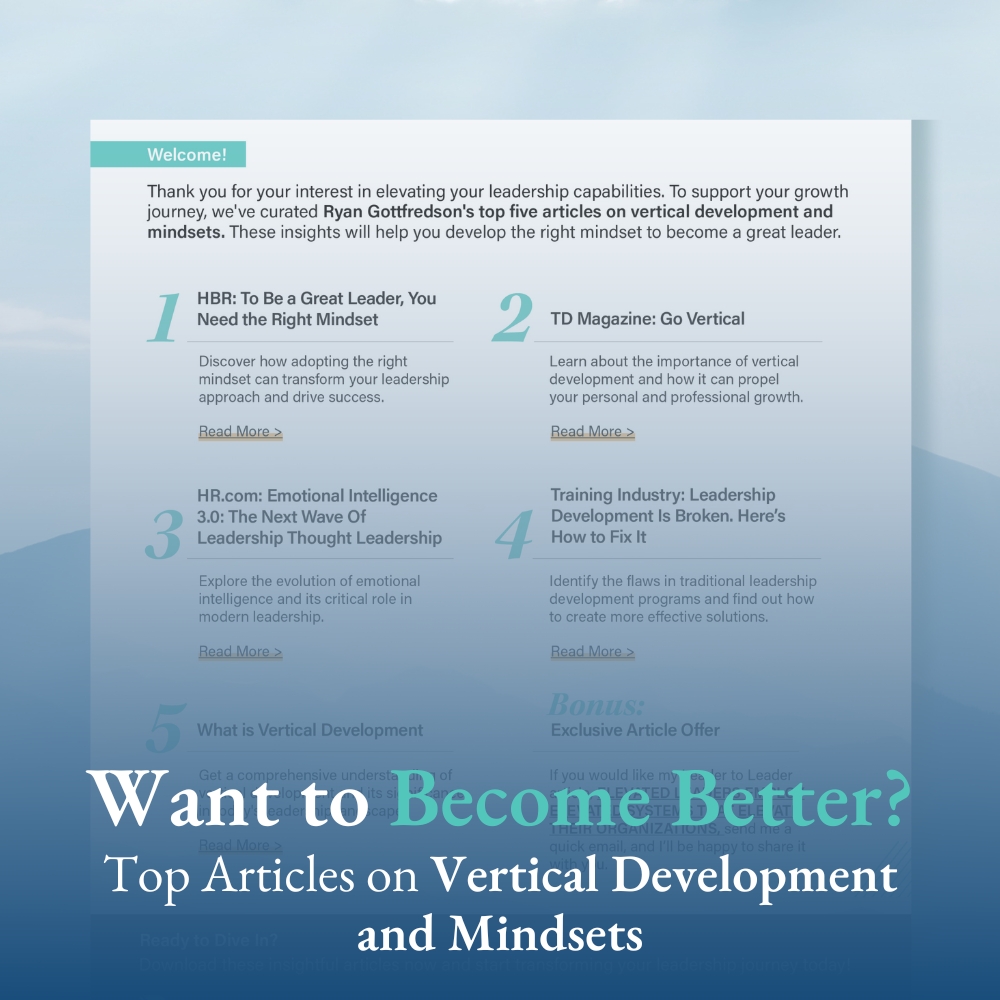LeadX continues to report that organizations’ biggest leadership development priority is helping their leaders and managers develop a greater ability to coach and develop their employees.
If you are wanting to better understand how to help your leaders and managers better coach and develop your employees, you are in the right place.
Setting Your Strategy for Improving Your Leaders and Managers as Coaches
There are two approaches that you can develop your leaders and managers.
The first developmental approach is to engage in horizontal development: Helping your leaders and managers develop the knowledge and skills to coach well. It is a lot like downloading a “coaching app” onto your leaders and managers.
Horizontal development is the form of development that is most typically used in development efforts. But, it generally not enough to help leaders and managers become effective coaches. This is because while a leader may know how to coach and develop their employees, that does not mean that they actually will take the time and effort to coach and develop their employees.
So, if you want to help your leaders and managers to actually prioritize and engage in coaching, you will need to employ another developmental approach.
The second developmental approach is to engage in vertical development: Helping your leaders develop a coaching mindset.
If horizontal development involves downloading apps onto a leader, vertical development is upgrading the leader’s internal operating system so that they have a greater capacity to utilize the apps that have been downloaded.
Both of these developmental approaches can be engaged in simultaneously. But, if an organization is going to prioritize one over the other, my recommendation is to prioritize the vertical development efforts, because vertical development will help leaders and managers develop a coaching mindset. And, without that, the leaders and managers will not employ any coaching knowledge or skills that you help them download.
Vertical Development: Developing a Coaching Mindset
To truly understand the value of vertical development efforts in helping your leaders and managers become more effective coaches, it is important to explore why leaders struggle to make coaching their people a priority, and we need to address those reasons.
There are two main reasons why leaders and managers do not prioritize coaching (regardless of whether they have the knowledge or skills to effectively coach their people):
- They are too focused on getting their work done and accomplishing the results that they feel are expected of them
- They are afraid that if they spend time coaching and developing their employees, they will fall behind on their work
For most leaders, there is a strong emotional connection to this focus and fear. And, when leaders have a strong emotional connection to this focus and fear, they will operate with a performance mindset, not a coaching mindset, which will prevent them from prioritizing coaching and developing.
Thus, the vertical development efforts need to help leaders to be able to develop the capacity to become more dynamic by helping them recognize that:
- Effective leaders and managers don’t just wear the “performance hat”
- Effective leaders and managers develop the capacity to take off and put on different hats at different times
- Effective leaders and managers need to be able to consciously and emotionally put on the “coaching hat”
- Yes, wearing the “coaching hat” can be inefficient in the short-term, it is a valuable investment for long-term performance
For more on this, it is helpful to understand the three levels of vertical development: Mind 1.0, Mind 2.0, and Mind 3.0.
Some quick facts about these three levels are:
- 7% of leaders operate in Mind 1.0. At this level, leaders and managers are too concerned about their safety and comfort to be able to effectively prioritize the coaching and development of their employees.
- 85% of leaders operate in Mind 2.0, which is a mode of operation where leaders operate almost solely with a performance mindset.
- Only 8% of leaders operate in Mind 3.0. To the degree to which leaders develop into this level is the degree to which they develop a greater capacity to take off and put on different “hats” as needed.
Vertical Development: Developing a Coaching Mindset
It is only after leaders develop the capacity to put on their coaching “hat” and “mindset” that they will be able to employ their coaching skills.
Here are some lists of the skills that leaders will need to develop via horizontal development:
From the Center of Creative Leadership:
- Listen to Understand
- Ask Powerful Questions
- Challenge and Support
- Establish Next Steps and Accountability
From Hiserise:
- Ask powerful questions
- Goal setting expertise
- Positive reinforcement
- Constructive feedback
- Empowerment
- Strengths-based coaching
- Performance management
- Active listening
From Govert van Sandwijk:
- Adaptive communication
- Motivation
- Strengths-spotting
- Outcome focus
- Building trust
Putting Together Both Horizontal and Vertical Development
Looking over these lists, I hope you recognize that:
- While a leader may possess the horizontal skills listed above, if they are not a very vertically developed leader (someone who is solely focused on performing), they may not implement these skills (because these skills require an investment in time and energy that is not directly connected to performance).
- If you just focus on helping leaders develop the horizontal skills listed above, that does not mean that your leaders and managers will actually implement these skills.
In all, if you’re helping your leaders and managers improve in their ability to coach and develop their employees, I hope this helps you more effectively strategize your development efforts to include both vertical and horizontal development.
And, if you would like assistance with the vertical development aspect of your development efforts, I would love to help. You can connect with me here.










